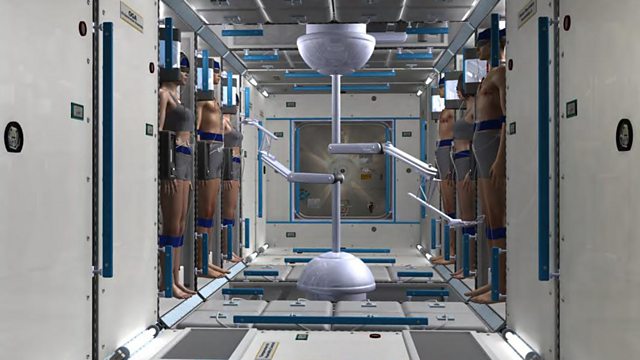Human Hibernation
Can we pull off the tricks of hibernating animals to survive traumatic injuries or take long distant journeys into space? Dr Kevin Fong examines how humans could embrace torpor
Ever wished you could miss an entire cold dark winter like bears or dormice? Kevin Fong explores the possibilities than humans could hibernate. This ability could help us recover from serious injury or make long space flights pass in a flash.
The first report on human hibernation in a medical journal was in the BMJ in 1900. It was an account of Russian peasants who, the author claimed, were able to hibernate. Existing in a state approaching "chronic famine", residents of the north-eastern Pskov region would retreat indoors at the first sign of snow, and there gather around the stove and fall into a deep slumber they called "lotska". No-one has ever found these peasants but there is serious research into putting humans into suspended animation, for long distance space travel or for allowing the body to recover from major injury.
The greatest clues into how to pull off hibernation comes from the American Black Bear. Dr Kevin Fong, an expert in trauma medicine, talks to Dr Brian Barnes, Director of the Institute of Arctic Biology at the University of Alaska. He's done the most extensive study of black bears and observed how they slow down their metabolism. Fat-tailed lemurs are the only primates to hibernate. Duke University's Lemur Research Centre has discovered that they breathe just once every 20 minutes at their deepest torpor. These lemurs live longer than other animals of similar size. Could we find a way to use this trick of suspended animation? We could slow down out physiology ,cool down our bodies and hibernate during long space journeys. NASA too is working on how humans can survive trips to other solar systems.
Kevin Fong goes to the lab of Professor Robert Henning at the University Medical Centre in Groningen where he's worked out how animals protect their organs when they slow their body metabolism , enter a state of torpor and then return to normal physiology. Rob Henning wants to apply this to humans, on earth and in space. Already doctors use cooling in patients who have serious head injuries. Could this technique be applied further to allow us to fight disease and buy time for surgeons in the hospital trauma unit?
Producer: Adrian Washbourne
Image credit: Spaceworks
Last on
More episodes
Previous
Clip
-
![]()
Could dwarf lemurs hold clues to our ability to hibernate?
Duration: 01:36
Broadcasts
- Mon 13 Mar 2017 19:32GMT大象传媒 World Service East and Southern Africa & West and Central Africa only
- Mon 13 Mar 2017 20:32GMT大象传媒 World Service Online, Americas and the Caribbean, Australasia, Europe and the Middle East & UK DAB/Freeview only
- Mon 13 Mar 2017 21:32GMT大象传媒 World Service East Asia & South Asia only
- Tue 14 Mar 2017 02:32GMT大象传媒 World Service Americas and the Caribbean
- Tue 14 Mar 2017 03:32GMT大象传媒 World Service Online, Europe and the Middle East & UK DAB/Freeview only
- Tue 14 Mar 2017 04:32GMT大象传媒 World Service East Asia & South Asia only
- Tue 14 Mar 2017 05:32GMT大象传媒 World Service Australasia
- Tue 14 Mar 2017 07:32GMT大象传媒 World Service East and Southern Africa & Europe and the Middle East only
Space
The eclipses, spacecraft and astronauts changing our view of the Universe
The Curious Cases of Rutherford and Fry
Podcast
-
![]()
Discovery
Explorations in the world of science.




